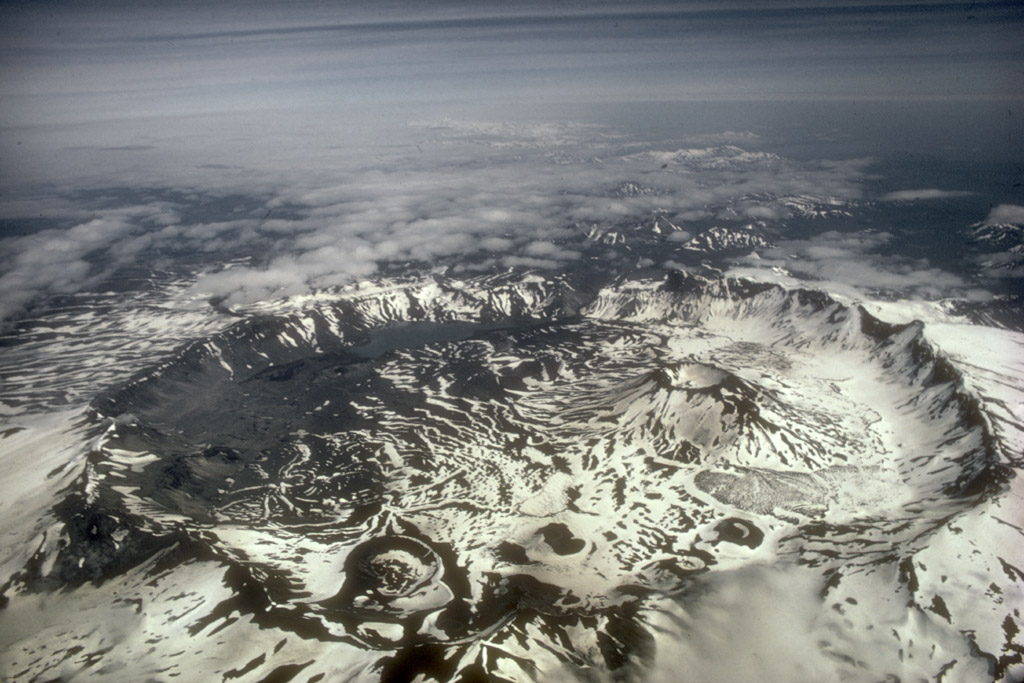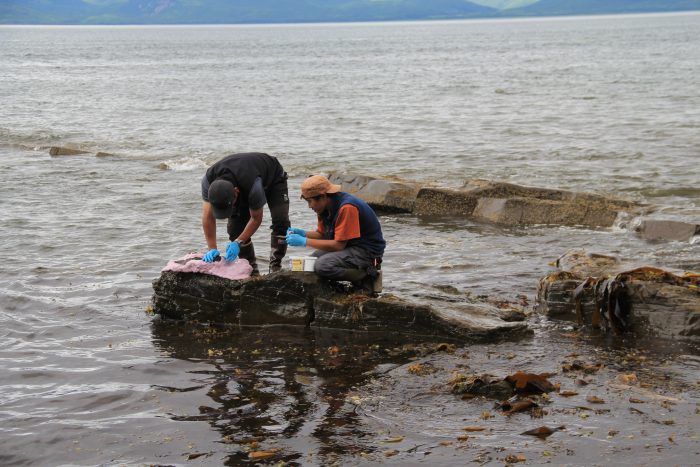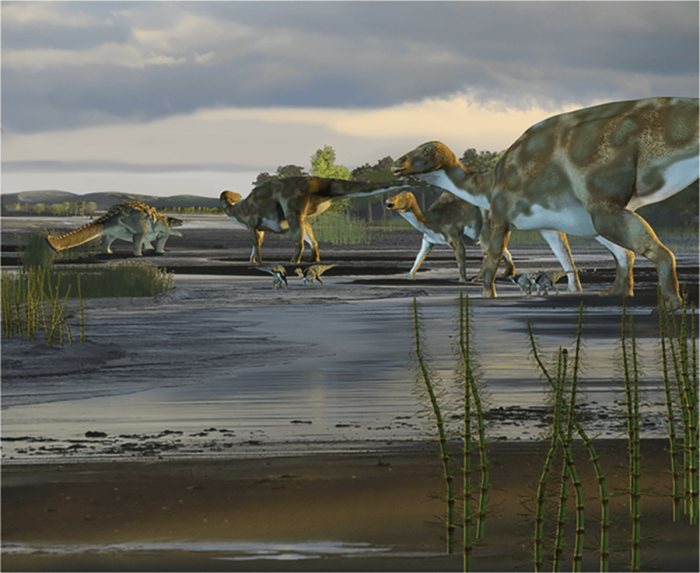
“…It was the abomination of desolation, it was the prelude to hell,” is how the Jesuit priest, Father Bernard Hubbard, described the Aniakchak Caldera of the Aleutian Range shortly after its eruption in 1931.
Dramatic description aside, when I first learned of an opportunity to head to the Alaska Peninsula to look for the remains of dinosaurs, my attention immediately focused on a place called Aniakchak National Monument and Preserve, home of the famous Aniakchak Caldera – and one of the least-visited places in the National Park System (NPS).

Panorama of Aniakchak Bay, including exposures of the Chignik Formation. Photo Credit: Courtesy of Dr. Anthony Fiorillo, Perot Museum of Nature and Science
In 2001, in partnership with the National Park Service, Alaska Region, and the staff at the Katmai National Park administrative center in King Salmon, Alaska, I was able to undertake a spectacular white water raft trip down the Aniakchak River. After days of unfruitful exploration, a sense of melancholy took over as we neared the end of the river, where it met the bay. Here we were to break down the rafts and wait for our floatplane to take us out.
But, as often is the case in a paleontological field project, in the last couple of hours of a trip as I peered around one last corner, I discovered what would eventually be identified as a 70 million-year-old, three-toed impression of a duck-billed dinosaur. Not only was it the first record of a dinosaur in this remote national park unit, but it was the first record of a dinosaur in the entire Alaska National Park system!
We returned to Aniakchak the following year to thoroughly document this track, but access to this highly isolated region comes at a high cost. Shortly after, we started working further northeast in Denali National Park, which was much cheaper by comparison, so our attention shifted. In Denali, we discovered and documented several new species and thousands of tracks attributable to a variety of dinosaurs and other fossil animals.
After 15 years of successful exploration in Denali, it seemed time to return to Aniakchak with a more attuned eye for footprints.

Co-authors Yoshitsugu Kobayashi and Tomonori Tanaka making a mold of hadrosaurfootprints before the rising tide submerges the tracks. Photo Credit: Courtesy of Dr. Anthony Fiorillo, Perot Museum of Nature and Science
When we re-engaged with Aniakchak in 2016 and over the years following, we documented dozens and dozens of footprints, which I clearly missed in my earlier work. And this time, not only did we find an abundance of duck-billed dinosaur footprints representing adults all the way down to juveniles, but we found much greater biodiversity with tracks attributable to fossil birds, a meat-eating dinosaur about the size of the pygmy tyrannosaur that we had recently unearthed in Arctic Alaska, armored dinosaurs and fishes.

Artist Karen Carr’s rendering of Aniakchak in the Late Cretaceous. Photo Credit: Courtesy of Dr. Anthony Fiorillo, Perot Museum of Nature and Science
With the support of the National Park Service in this second phase as well, our work has shown that southern Alaska – some 70 million years ago – was home to a variety of dinosaurs, and among those dinosaurs were herds of duck-billed dinosaurs that cared for their young. Given the ancient coastal nature of the rocks containing these tracks, the abundance of duck-billed dinosaur tracks suggests families of duck-billed dinosaurs enjoyed the beach.
And given the abundance of dinosaur tracks we’ve found compared to the few human footprints we’ve left behind, I can’t help but wonder if, through geologic time, Aniakchak has known more dinosaurs than people.









